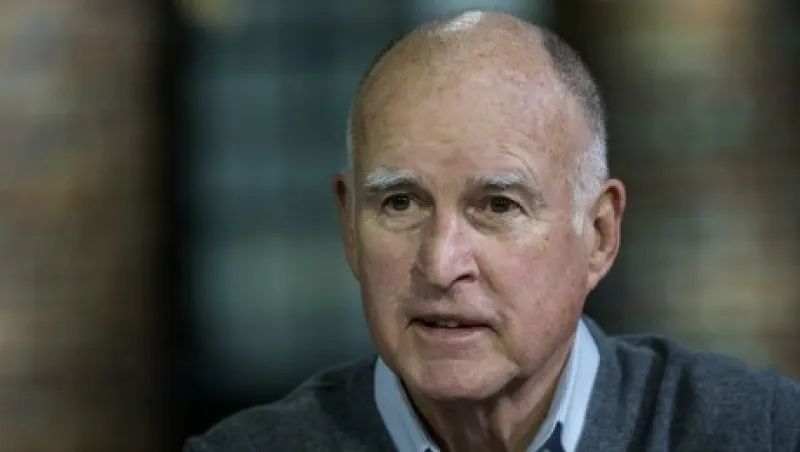A large swath of the nearly 7 million Californians working in the private sector without access to a retirement plan will soon be able to sign up for one. Or, to be more accurate, they will be automatically enrolled with the right to opt out of the new Secure Choice Retirement Savings Program. That is because last Thursday, August 25, the California State Assembly approved a version of a new state retirement plan for the private sector.
Although the passage of Secure Choice is a victory for those who fought hard for it, to many others, however, it is at best a compromise. At worst, it is a threat to the way retirement services have been sold, managed and regulated in the past. And as with anything new and untested, there are more questions than answers.
On the same day that California’s Assembly gave the green light to Secure Choice — the Senate passed the measure in May, and it now awaits Governor Jerry Brown’s signature — the U.S. Department of Labor removed a roadblock to state-sponsored private sector retirement plans by creating a safe harbor rule to reduce the risk of ERISA preemption. In plain English, that means that these programs would be safe from any potential noncompliance with the federal Employee Retirement Income Security Act, the omnibus legislation governing private pensions. This will negate at least one of the main arguments made throughout the California program’s legislative process — mostly by the financial services industry — that these plans would not be workable under current law.
This momentous event in the history of the U.S. retirement system was first put in motion by Democratic California state senator Kevin de León — now the president pro tempore — with the September 2012 passage of Bill 1234 by the California State Senate. Formally named the California Secure Choice Retirement Savings Trust Act and signed that year by Governor Brown, the bill formulated a pension plan that would modestly supplement Social Security for previously uncovered private sector employees and “stem the retirement insecurity tsunami,” as the state senator explained to me in 2013.
De León, a former teacher, started work on what would become the 2012 bill back in 2007, the year he won election to the state assembly. In its first version, de León designed an individual savings plan with auto-enrollment, pooled assets, principal protection, professional investment management and a modest guaranteed return. Those features are on the drawing boards of other retirement plan design architects who are seeking to create a new national model for the 70 million private sector workers who are not participating in any kind of retirement plan.
As happened in the seven other states that enacted new retirement plan bills before California — Connecticut, Illinois, Maryland, Massachusetts, New Jersey, Oregon and Washington — the financial services industry lobby fought hard in state capitols to create less effective, IRA-type saving vehicles. In New Jersey and Washington, the battle to create a real retirement plan resulted merely in a marketplace from which plan vendors can sell their IRA products.
On the opposite pole from the financial services industry, which dreads any program that would disintermediate their voluminous array of products, are those who are disappointed that California Secure Choice provides too weak a benefit. These proponents of a traditional defined-benefit-style pension say the California plan is too modest and not a replacement for true pensions that automatically enroll participants in a pool of assets with the attendant low cost, professional management and employer contribution. Still others complain that the scheme lacks a retirement income option that would provide retirees with a monthly payout.
Then there are those who fear a bad outcome beyond inadequate savings. Without ERISA oversight, a new governing body will be needed to ensure the plans are run without conflicts. Let’s face it, not every state government has an unblemished record in its past handling of its long-established public employees’ retirement system.
Past offenses include so-called contribution holidays, when no new employer money flowed into these systems, that many public employers, such as those in California, New Jersey and Illinois, took throughout the 1990s. Then there are the state legislatures that “borrowed” sums from their state retirement trust funds, without ever replacing it. These and other pension sins have left large holes in some state and city retirement coffers, such as those of Illinois, Rhode Island and Detroit. But states like Wisconsin, Idaho and Delaware have shown that it is possible to manage state retirement systems well. Wisconsin, for example, has never missed an employer pension contribution, and when Governor Tommy Thompson raided the trust fund in the late 1980s, participants sued to recoup their losses — and won.
Criticisms aside, without stepping in to create some way to ensure that a good portion of the private sector workforce starts saving for retirement, what alternative is there? Retirement plan vendors will not sell small plans at a reasonable price to microbusinesses — and who can blame them? There is a cost to providing these benefits, and only larger plans afford economies of scale. Which brings us to the reason why states are stepping in to avoid being left with a yawning gap in baby boomer savings and for generations to come.
Whereas it is admirable that retirement security advocates are working mightily on the state level, for those who favor a national plan, there is an alternative to the growing patchwork of new state plans. A new federally approved system of multiple-employer plans, in which employers within the same industry or same geographic location band together to offer a comprehensive plan, would allow for both employer and employee contributions, lock the money in until retirement, allow for lifetime payouts. Thought leaders in organizations as diverse as the Pension Rights Center and Prudential Retirement, among others, are in favor of this idea. We once put men on the moon. We can do this.
Follow Frances Denmark on Twitter at @francesdenmark.
Get more on pensions .






